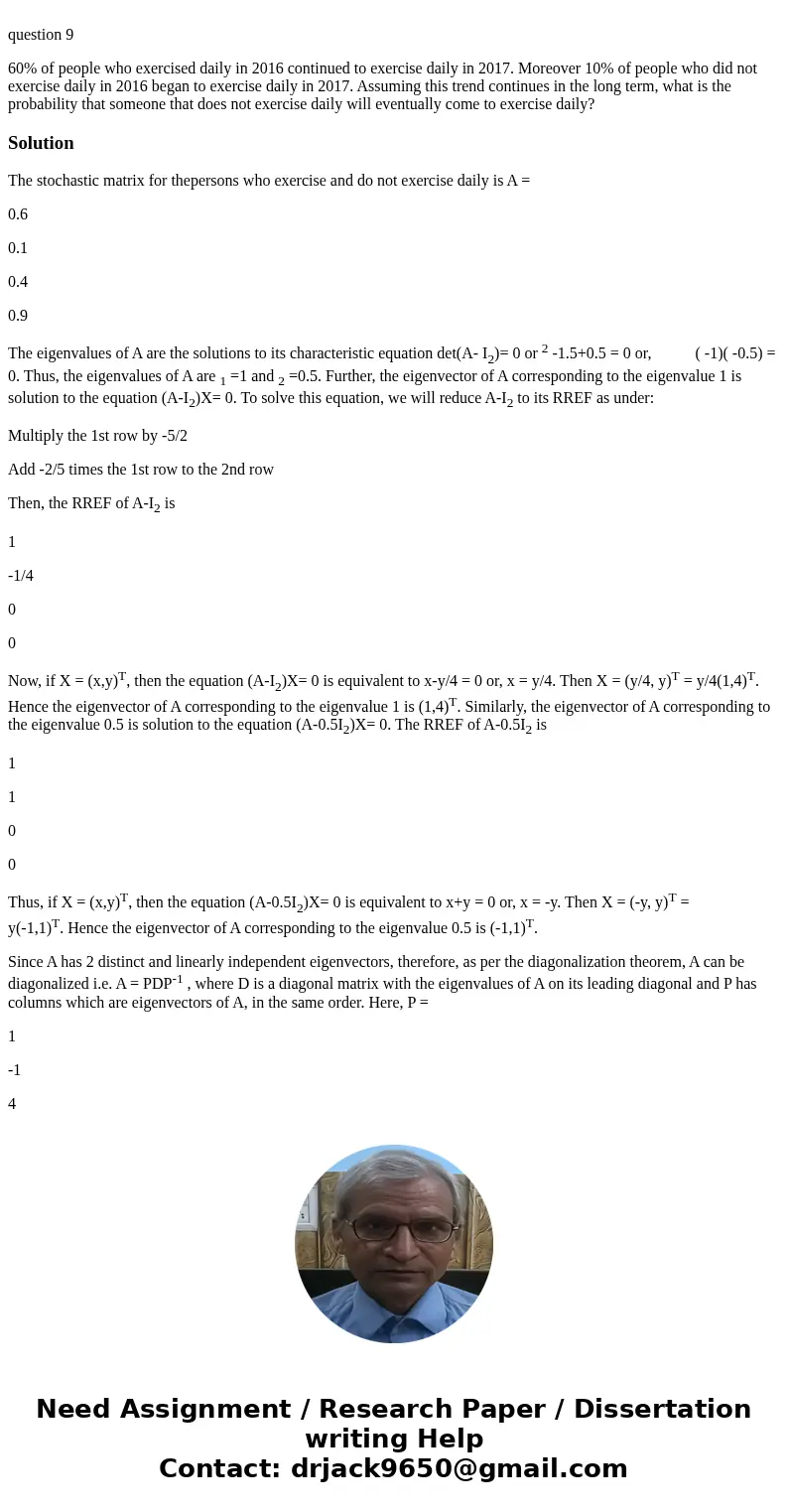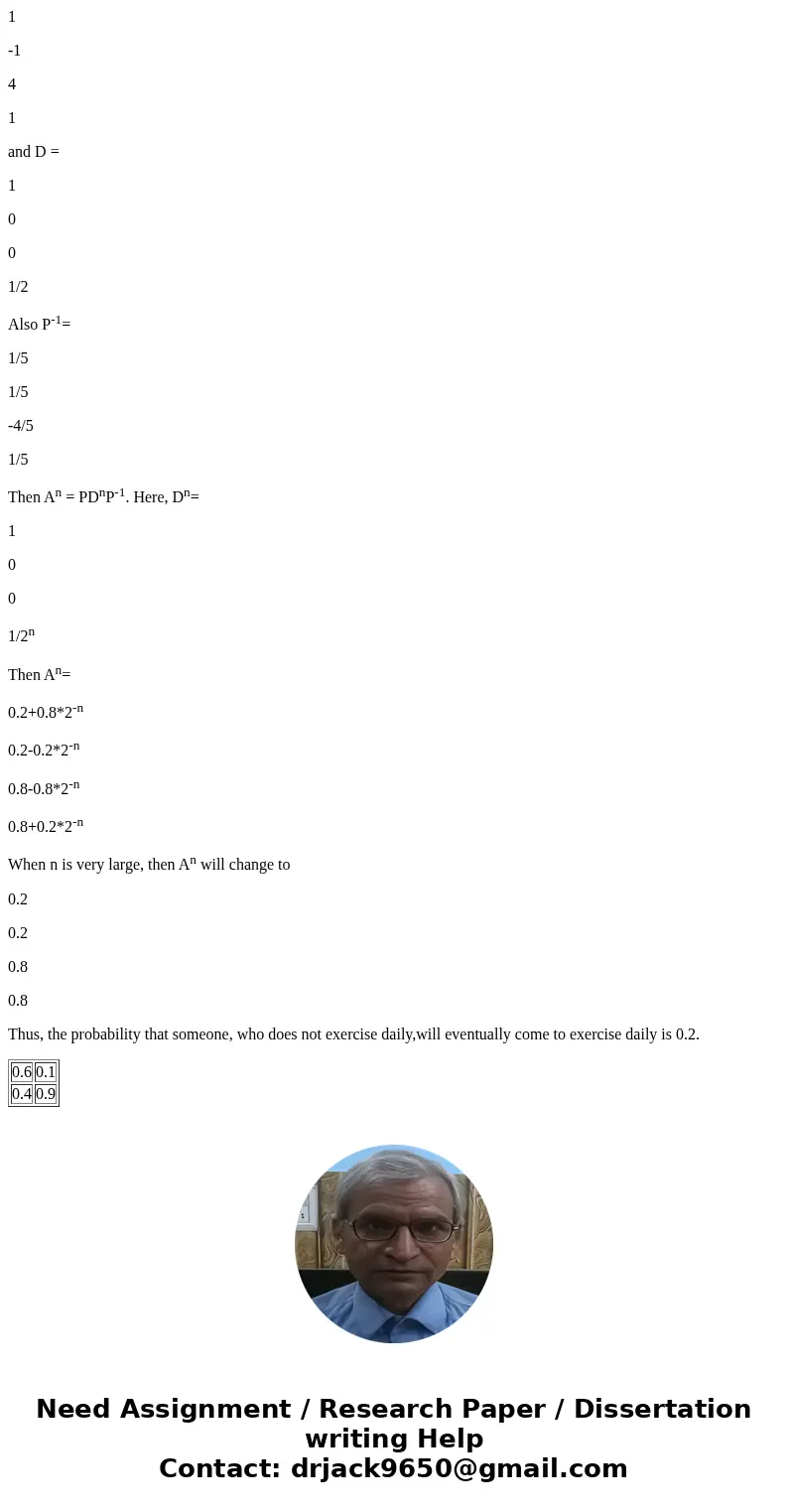question 9 60 of people who exercised daily in 2016 continue
question 9
Solution
The stochastic matrix for thepersons who exercise and do not exercise daily is A =
0.6
0.1
0.4
0.9
The eigenvalues of A are the solutions to its characteristic equation det(A- I2)= 0 or 2 -1.5+0.5 = 0 or, ( -1)( -0.5) = 0. Thus, the eigenvalues of A are 1 =1 and 2 =0.5. Further, the eigenvector of A corresponding to the eigenvalue 1 is solution to the equation (A-I2)X= 0. To solve this equation, we will reduce A-I2 to its RREF as under:
Multiply the 1st row by -5/2
Add -2/5 times the 1st row to the 2nd row
Then, the RREF of A-I2 is
1
-1/4
0
0
Now, if X = (x,y)T, then the equation (A-I2)X= 0 is equivalent to x-y/4 = 0 or, x = y/4. Then X = (y/4, y)T = y/4(1,4)T. Hence the eigenvector of A corresponding to the eigenvalue 1 is (1,4)T. Similarly, the eigenvector of A corresponding to the eigenvalue 0.5 is solution to the equation (A-0.5I2)X= 0. The RREF of A-0.5I2 is
1
1
0
0
Thus, if X = (x,y)T, then the equation (A-0.5I2)X= 0 is equivalent to x+y = 0 or, x = -y. Then X = (-y, y)T = y(-1,1)T. Hence the eigenvector of A corresponding to the eigenvalue 0.5 is (-1,1)T.
Since A has 2 distinct and linearly independent eigenvectors, therefore, as per the diagonalization theorem, A can be diagonalized i.e. A = PDP-1 , where D is a diagonal matrix with the eigenvalues of A on its leading diagonal and P has columns which are eigenvectors of A, in the same order. Here, P =
1
-1
4
1
and D =
1
0
0
1/2
Also P-1=
1/5
1/5
-4/5
1/5
Then An = PDnP-1. Here, Dn=
1
0
0
1/2n
Then An=
0.2+0.8*2-n
0.2-0.2*2-n
0.8-0.8*2-n
0.8+0.2*2-n
When n is very large, then An will change to
0.2
0.2
0.8
0.8
Thus, the probability that someone, who does not exercise daily,will eventually come to exercise daily is 0.2.
| 0.6 | 0.1 |
| 0.4 | 0.9 |


 Homework Sourse
Homework Sourse